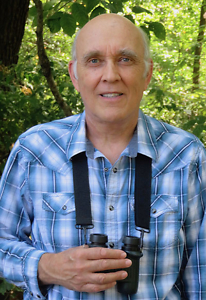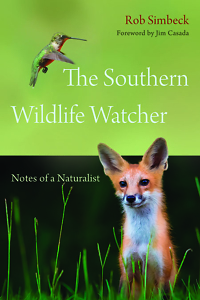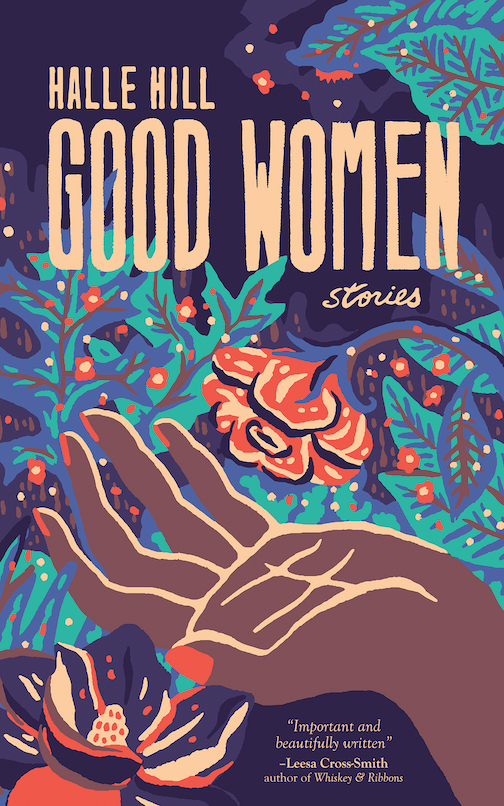American Crow to Great White Shark
The Southern Wildlife Watcher surveys the region’s creatures
Have you ever watched dragonflies skim across an algae-choked pond and wondered what they are seeking, how many different kinds there are, and what they were like as babies? Or, when digging in your garden, have you turned up earthworms, stopped to examine them and admire their efficiency, and thanked them for their critical role in our own food supply chain? Have you gazed up in awe as a bald eagle soared above on great wings and then found yourself wanting to know more about its daily life? If so, Rob Simbeck’s essay collection The Southern Wildlife Watcher: Notes of a Naturalist belongs on your bookshelf and in your backpack.

“To become a dedicated wildlife watcher is to lose yourself to wonder,” Simbeck writes in the opening to his essay on the monarch butterfly. “It is to marvel at the bud and the blossom, the goldfinch’s molt and the spider’s web. It is to treasure the cicada’s buzz, the frog’s croak, and the groundhog’s waddle, to relish the dolphin’s breach, the bumblebee’s flight, and the blue jay’s wheedling call.”
Divided into creatures of the air, land, and water, the collection is both personal and practical. Each of the 36 short essays describes the distinguishing marks of an animal, bird, or insect, along with its behavior and habitat, as well as its place in the food chain, in myth and literature, and in Simbeck’s own life. A boxed summary at the end of every essay provides bullet points on appearance, range, and habitat and offers tips on how to find and identify each creature in the wild.
 Simbeck, a former president and chairman of the Southeastern Outdoor Press Association, brings a sharp eye for detail and obvious love of nature to his pithy observations of everything from the house fly to the groundhog. He calls his guide “a love story, a record of my appreciation for the creatures around us – large and small, drab and flashy. These essays sing the praises of the fox and the frog, the shark and the spider, the owl and the oyster.”
Simbeck, a former president and chairman of the Southeastern Outdoor Press Association, brings a sharp eye for detail and obvious love of nature to his pithy observations of everything from the house fly to the groundhog. He calls his guide “a love story, a record of my appreciation for the creatures around us – large and small, drab and flashy. These essays sing the praises of the fox and the frog, the shark and the spider, the owl and the oyster.”
The love story with nature is bound up with another love story. Simbeck’s wife, Debby, promised him hummingbirds on one of their first dates. She walked out into her Wilson County backyard and held up a feeder filled with nectar while he watched from the porch. He thought this behavior was somewhat eccentric.
“Soon though something that sounded like a tiny atomic cat purring zipped across my field of vision. It stopped a few feet from her and the feeder, hanging in midair like a battery-operated Christmas ornament, its body angled kind of like the Concorde,” he writes. “It eyed her, eyed the feeder and moved in for a drink. Debbie lit up like she’d just been named Miss America.”

Lyda Phillips is a veteran journalist who grew up in Memphis and has earned degrees from Northwestern, Columbia, and Vanderbilt universities. The author of two young-adult novels, she worked for United Press International before returning to Nashville.


